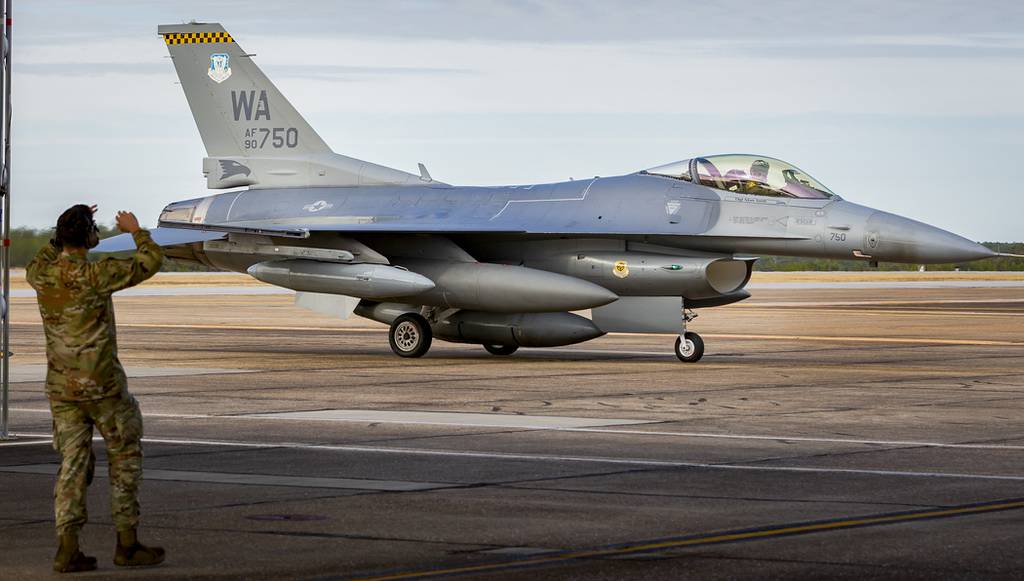The first three F-16 Fighting Falcons that will be loaded with self-flying technology have arrived at Eglin Air Force Base in Florida, the Air Force said Tuesday.
The arrival of the F-16s marks the service’s biggest step forward yet in standing up the program known as Venom, which stands for Viper Experimentation and Next-gen Operations Model-Autonomy Flying Testbed and aims to speed up the testing of autonomous technology on both crewed and uncrewed aircraft.
The Air Force hopes the autonomous technology tested under Venom could help it more quickly shape plans to create a fleet of self-flying drones that team up with crewed fighters in battle, known as collaborative combat aircraft.
The service is heavily focusing on creating a fleet of at least 1,000 CCAs, which will use autonomous capabilities to fly alongside aircraft such as the F-35 or future Next-Generation Air Dominance family of fighter systems. These drone wingmen would carry missiles or other weapons to strike enemy targets, jam enemy signals through electronic warfare operations or perform reconnaissance missions.
The Air Force is increasingly confident autonomous capabilities have advanced to the point where such aircraft can succeed. But officials say there are still a lot of questions to answer about how the technology will work in action, which led the service to launch Project Venom with a nearly $50 million investment this year.
The service eventually plans to modify six F-16s to serve as test aircraft as part of Venom. It has requested another $7 million for the program in 2025, with the following years’ budgets ranging from $6.1 million to $6.6 million.
Maj. Ross Elder, the program’s developmental test lead, said in an Air Force statement Venom will represent a step toward “a new age of aviation.”
“The Venom program marks a pivotal chapter in the advancement of aerial combat capabilities,” he said.
The 96th Test Wing’s 40th Flight Test Squadron and 53rd Wing’s 85th Test and Evaluation Squadron at Eglin will work together to carry out Venom’s developmental and operational testing.
“Having both [developmental test] and [operational test] pilots working and flying from the same location allows for daily collaboration and reduces the stovepiping of knowledge and lessons learned,” said Lt. Col. Jeremy Castor, who is in charge of Venom’s operational testing.
When Venom’s self-flying F-16s are ready, the Air Force will start testing them with human pilots in the cockpit. Those pilots will take off with the jets and fly them to a testing location, and then allow the autonomous programming to take over in midair. The pilots in the cockpit will keep track of the autonomous software to see whether it works as intended, and make sure all the test objectives are met.
Lt. Col. Joe Gagnon, squadron commander of the 85th, said a human will at all times be ready to start and stop the autonomous algorithms if needed.
“There will never be a time where the Venom aircraft will solely fly by itself without a human component,” he added.
Stephen Losey is the air warfare reporter for Defense News. He previously covered leadership and personnel issues at Air Force Times, and the Pentagon, special operations and air warfare at Military.com. He has traveled to the Middle East to cover U.S. Air Force operations.








